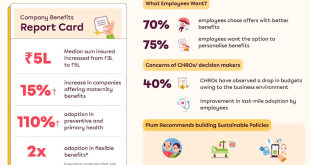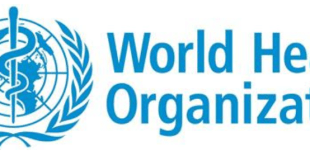FARIDABAD, April 18: India has world’s second highest prevalence of viral hepatitis cases. While hepatitis A and E cause an acute form of the disease, hepatitis B and C lead to chronic liver disease including cirrhosis and even liver cancer. Ahead of World Liver Day (April 19), gastroenterologists at Amrita Hospital, Faridabad said, Hepatitis B infection alone accounts for a third of all chronic liver disease and over 50% of al liver cancer patients in India. Hepatitis A accounts to a majority of all acute liver failure in India.
Hepatitis, a group of liver diseases characterized by inflammation, encompasses various types such as hepatitis A, B, and E. While hepatitis B predominantly affects adults and poses a substantial burden on public health due to its chronicity and association with liver cancer, hepatitis A and E primarily impact children and adults through contaminated food and water, leading to acute liver inflammation. Hepatitis A (HAV) predominantly affects individuals below 19 years old, while Hepatitis E (HEV) is more prevalent in those above 20 years old. Clinical disease related to HAV is less common among children, with susceptible adolescents and adults facing a higher risk of infection and illness. HAV can also lead to relapses, unlike HEV. Additionally, HAV may cause “prolonged cholestasis” during recovery, presenting symptoms such as itching, clay-colored stools, and a second surge in jaundice. Diagnosis and treatment of these types of hepatitis also differ.
The recently released Global Hepatitis Report 2024 by World Health Organisation has data which is of severe concern to India. The report also points troubling fact that despite progress in preventing the prevalence and spread of Hepatitis, the mortality rates are still on the rise as only a few patients avail proper diagnosis and treatment. According to WHO’s report, India has one of the highest burdens of viral hepatitis.
Dr. Bhaskar Nandi, HoD, Gastroenterology, Amrita Hospital, Faridabad said, “Horizontal transmission, accounting for over 60% of cases, and vertical transmission from mother to newborn are predominant modes of HBV infection in India. Other significant transmission routes include unsafe injection practices, IV drug abuse, tattooing, and high-risk sexual behavior. Tribals, HBV patient contacts, dialysis patients, professional blood donors, IV drug users, and individuals with risky sexual behavior are at elevated risk. HBV infection often remains silent for years before manifesting as cirrhosis or complications like jaundice, ascites, variceal bleeding, or liver failure. Chronic HBV infection contributes to over half of liver cancer cases and a significant number of annual liver-related deaths, emphasizing its public health impact.”
Studies have revealed that India’s intermediate endemicity for Hepatitis B Virus (HBV) sees a prevalence of 2-4%, with 10-15% of the global HBV pool and 40 million carriers. 15-25% develop cirrhosis, contributing to 40-50% of liver cancer and 20-30% of cirrhosis cases. Approximately 1 million infants born annually face a lifetime HBV risk. Tribal areas exhibit high prevalence, up to 15.9%, notably in Ladakh (12.7%), Arunachal Pradesh (21.2%), and the Andaman-Nicobar Islands’ tribes (up to 65%). Dialysis patients show 5-13% seropositivity. With inadequate data collection, India must address HBV as a persistent public health issue to meet WHO’s goal of 90% HBV reduction by 2030.
There are many challenges in prevention of hepatitis B as it is a silent and highly infective virus. In India, the infection is generally acquired in childhood and subsequent diagnosis and treatment requires specialised centres with trained staff or medical health workers. Additionally, for protection against HBV infection, both individual and governmental efforts are essential, including periodic testing, universal vaccination, safe practices, and public health initiatives to increase awareness and access to screening and treatment facilities.
Meanwhile, Hepatitis A virus infection is the commonest cause of pediatric liver disease in India, with severity varying from uncomplicated subclinical/clinical acute viral hepatitis to acute liver failure. Hepatitis A accounts 70-80% of acute viral hepatitis, 40-60% of all acute liver failure in children for Indian subcontinent. According to national estimates 44,663 cases of Hepatitis A infection were detected between 2011-2013 This burden is reportedly much higher than the current case load (per year) for all other vaccine preventable diseases in India, except Pertussis (in year 2013).
Hepatitis A and E, both RNA viruses, cause liver inflammation and are primarily transmitted through contaminated food or water and poor hygiene. They manifest as sporadic or epidemic acute hepatitis, with cyclic recurrences, especially during monsoon season. Infections are more prevalent in developing countries, with outbreaks reported in Indian states like Kerala, Tamil Nadu, Himachal Pradesh, and Maharashtra, affecting both children and adults. Hepatitis E positivity is higher in older age groups compared to Hepatitis A.
Dr. Arti Pawaria, Clinical Lead and Senior Consultant, Pediatric Hepatology and Gastroenterology, Amrita Hospital, Faridabad said, “The treatment for Hepatitis A and E is primarily supportive. In cases of acute liver failure, the risk of death is 50-60% wherein the only saving treatment can be super urgent liver transplant. Management of bleeding and cerebro-protection is crucial, with liver transplantation being necessary in cases with irreversible liver failure. All children with acute liver failure requires urgent hospitalization and early management. Prevention strategies include vaccination (Hep A, Hep B), avoiding uncooked or unhygienically prepared foods, ensuring access to safe drinking water, improving sanitation practices for sewage disposal, and maintaining personal hygiene through regular handwashing.”
The Hepatitis A vaccine, available in India as Havrix (killed) or Biovac A (attenuated), provides excellent protection, typically administered in two doses spaced six months apart, offering immunity lasting up to 20 years or more. However, there’s currently no commercially available vaccine for Hepatitis E in India. Vaccination against Hepatitis A is crucial as it ranks among the leading vaccine-preventable causes of global mortality, highlighting its significance in public health. Additionally, for protection against HBV infection, both individual and governmental efforts are essential, including periodic testing, universal vaccination, safe practices, and public health initiatives to increase awareness and access to screening and treatment facilities.
 Newspatrolling.com News cum Content Syndication Portal Online
Newspatrolling.com News cum Content Syndication Portal Online






